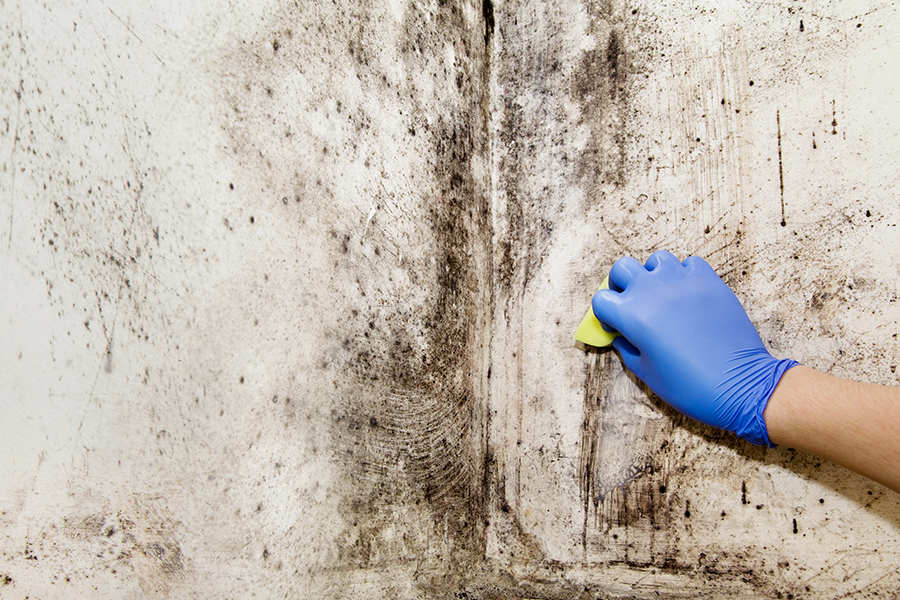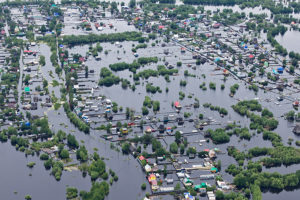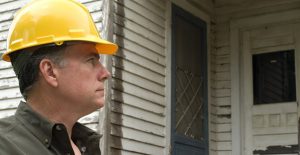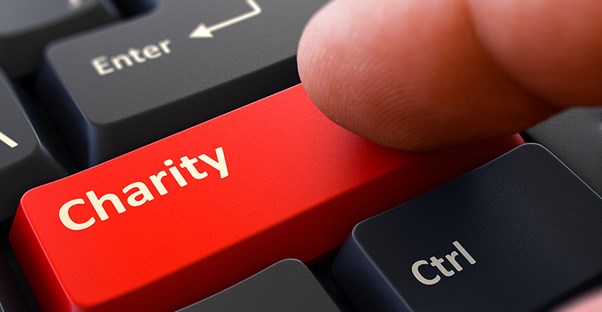How to Prevent Mold After Water Damage

One of the more unfortunate side effects of water damage is the biohazardous waste it leaves in its path. Various other pathogens aside, mold not only grows in the carpets, furniture, and other parts of the home, it releases spores into the air that can cause respiratory issues and even illness-inducing toxins when inhaled. Here’s a look at how to prevent mold after water damage.
Be Safe
If your home has been flooded or damaged it is important to take safety precautions before re-entering the home once it is safe. Don’t let older or very young family members into the house too soon. Wear a mask and gloves, and avoid eating or drinking in the home until any biological hazards have been attended to. Anything with mold or mildew—from couches to building materials—should be thoroughly cleaned before using the home. Realize that it may be necessary to hire a professional for safety and thoroughness’ sakes.
The first thing you need to do it fill a spray bottle with soapy water. Then before you do any cleaning, moving, or touch an item with mold, spray the affected area or item thoroughly, as this will help prevent the mold from sending its spores into the air. According to FEMA, even if the item itself is already wet, this doesn’t mean the mold is. Not even disinfectants will necessarily kill the mold.
Document the Damage
After a flood or other vicious water damage, once it is safe to go into the home, make sure you’ve taken care of any hazards. Turn off all your utilities (which you preferably did before the flood). The next most important step is to document the damage for insurance purposes. Take pictures, videos, and notes of anything that has been damaged before you start cleaning or restoring.
Get Dried Out
Start by getting the water out of your home. Use a water vacuum or pump to remove standing water. Remember to check the less obvious places. Check crawl spaces, ventilation systems, basements, garages, and anywhere else your house might be holding water.
What to Throw Out and What to Salvage
According to the Institute of Inspection Cleaning and Restoration Certification (IICRC), anything below the water should be thrown out. FEMA states that “many building materials, furniture, carpet and other items that stay wet for more than 24 hours will grow mold.” Remove any furniture or household items that have been sitting under water, and start removing flooded building materials (drywall, carpeting, insulation). Give the rest of the home a careful inspection (remember to be taking notes) even if the water didn’t reach it, including the structure itself (walls, trimming) as well as any items you have in the home.
Start Cleaning
Vacuum up as much soil and other residue as possible with a wet/dry vacuum—preferably a HEPA vacuum—and use a hose to vent the exhaust from the vacuum outdoors to avoid hazardous residue. To clean framing, wipe with dish soap, then rinse with the a pressure washer, and re-vacuum the water from any wet areas. You may have to do this several times to remove mold and mildew; if anyone in the house is especially sensitive, it may be wise to hire a professional. Once there is no visible mold, wipe everything down with a 1:4 water/bleach mixture (you can also wash clothes, curtains, or other machine washable items with bleach to remove mold and mildew).
It is extremely important to get the house completely dry within two days of completing the cleaning and sanitizing. The best way to do this is to blow warm air across the surfaces. Make sure it is directed outside to prevent any potential spores from relocating; this may entail closing doors, creating barriers to prevent cross contamination, or setting up dehumidifiers.






